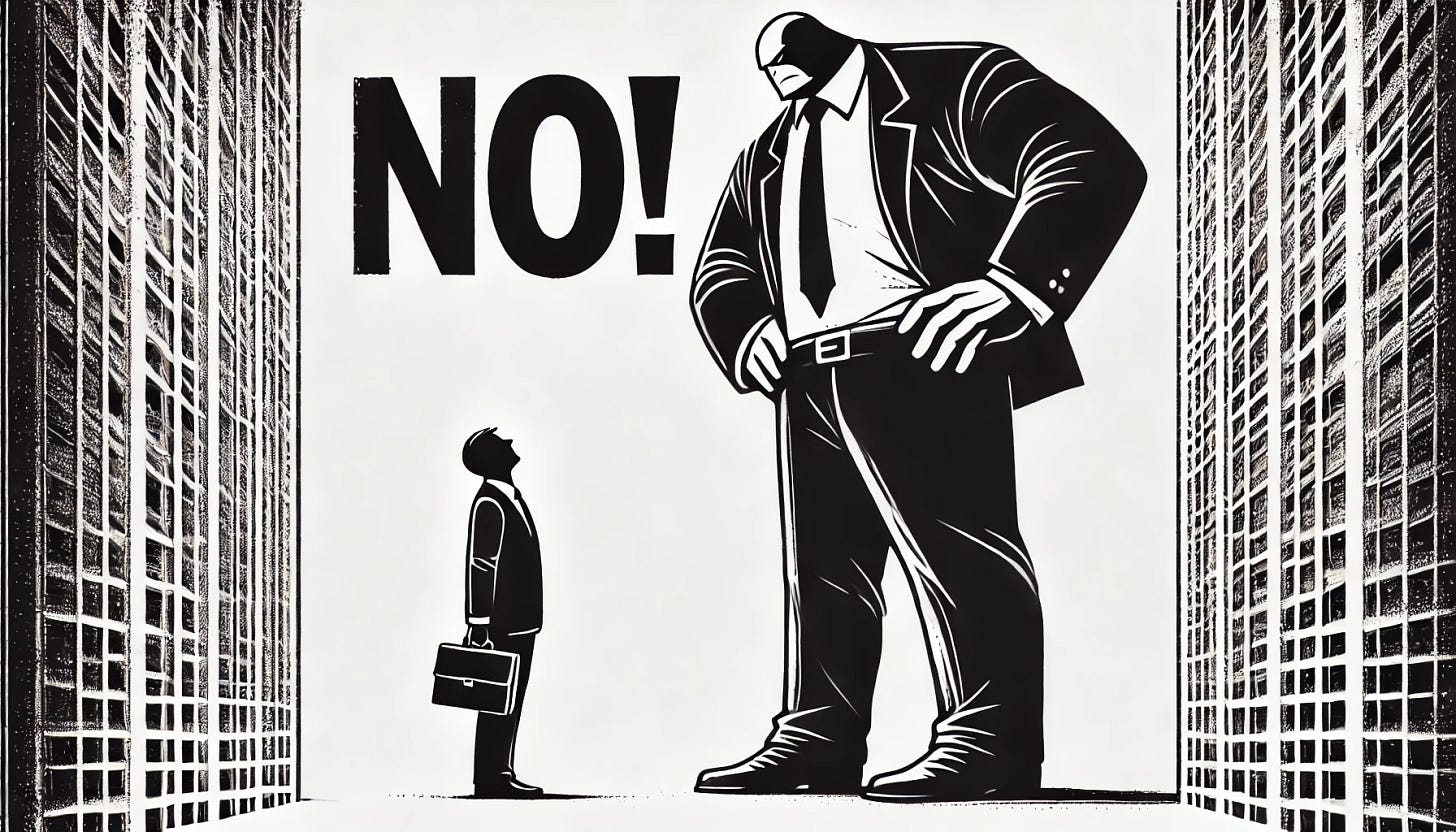How to say 'no' to executives (without killing your career)
The most dangerous word in an executive meeting is 'no.' My boss was about to say it to the CTO of Fortune 1.
The new CTO of Walmart leaned back in his chair, scanning the square room.
His request had been clear: move an entire Walmart store fully to the cloud.
No on-prem. No hybrid. All in.
He gave us two weeks to come back with an answer.
And now, he was waiting.
Around the room, SVPs and VPs sat frozen, their words measured like chess moves.
On the conference call, static buzzed over muted lines.
This wasn’t a debate. This wasn’t just another tech project.
This was a directive from the top of Fortune 1.
And the man sitting across from him, MJ, my boss, the VP of Engineering, was the one delivering the verdict. No.
The CTO wasn’t just any executive.
I had worked with him at Microsoft a year earlier. I knew how he operated.
He dismantled weak arguments like a surgeon. Most people who told him “no” found themselves agreeing with him 10 minutes later.
MJ knew that, too.
So as I watched him sit there, calm and collected, his thumb running over the edge of his wedding band, I wasn’t worried about him getting steamrolled.
I was just curious to see how he was going to win.
Because MJ wasn’t like the other execs in the room.
Others talked in corporate lingo.
MJ spoke in straight shots.
Others let emotion cloud their decisions.
MJ was impossible to rattle.
Others fought to be heard.
MJ made people listen.
And when he disagreed, he didn’t argue.
He led.
Step 1: Don’t Start With “No”
The CTO finished making his case. Then, he looked at MJ.
MJ let the silence stretch, just a beat longer than expected.
Then, he nodded, leaned forward, and spoke.
"I see what we’re trying to do here."
No resistance. No pushback. Just alignment.
The CTO waited. The room waited.
"It makes sense," MJ continued. "We want consistency, efficiency, and a scalable model across stores."
At that moment, MJ wasn’t an obstacle. He was a partner.
The CTO nodded. “So you agree with the direction?”
MJ held his gaze.
"I agree with the outcome."
Then he moved the goalposts.
Keep reading with a 7-day free trial
Subscribe to The Conscious Leader to keep reading this post and get 7 days of free access to the full post archives.


